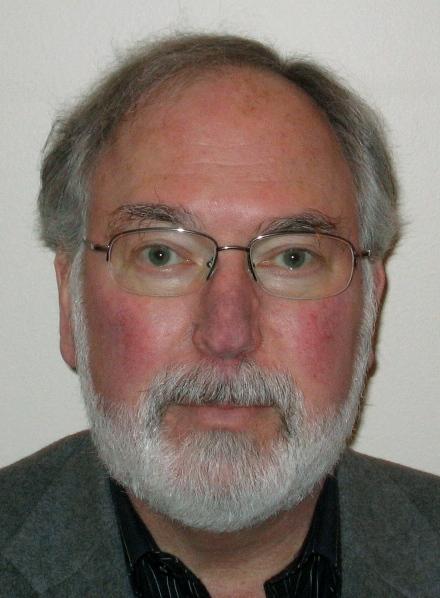
Когнитивные архитектуры
В этом разделе размещены ссылки на локальные страницы проектов разработки когнитивных архитектур и моделей, связанных с исследованиями в предметной области "Интеллектуальные системы и искусственный интеллект".
Список составлен по результатам поиска в сети Интернет, в общедоступных базах данных и других общедоступных информационных источниках. Составители не несут ответственности за точность представленной информации. Порядок размещения информации в списке выбран составителями.
Список проектов непрерывно пополняется. Просьба присылать любые предложения, дополнения, изменения, уточнения информации, представленной в списке, по адресу E-mail: Этот адрес электронной почты защищён от спам-ботов. У вас должен быть включен JavaScript для просмотра..
Зарегистрированные авторы и редакторы разделов имеют прямой доступ к редактированию информации по разделу
Sigma Architecture
 Sigma (Σ) graphical Cognitive Architecture is developed by a research group under Paul S. Rosenbloom - Project Leader in the Institute for Creative Technologies (ICT), Playa Vista, CA, USA at the University of Southern California (USC) and a Professor in the Computer Science Department, Viterbi School of Engineering (USC), Los Angeles, CA, USA. Sponsors: the U.S. Air Force Office of Scientific Research and the U.S. Army.
Sigma (Σ) graphical Cognitive Architecture is developed by a research group under Paul S. Rosenbloom - Project Leader in the Institute for Creative Technologies (ICT), Playa Vista, CA, USA at the University of Southern California (USC) and a Professor in the Computer Science Department, Viterbi School of Engineering (USC), Los Angeles, CA, USA. Sponsors: the U.S. Air Force Office of Scientific Research and the U.S. Army.
Email: Этот адрес электронной почты защищён от спам-ботов. У вас должен быть включен JavaScript для просмотра. | Paul Rosenbloom's home | Sigma (Σ)
- Подробности
- Категория: Cognitive architectures
- Просмотров: 1037
SNePS System
 SNePS (Semantic Network Processing System) is a knowledge representation, reasoning, and acting (KRRA) system developed and maintained by Stuart C. Shapiro and colleagues (Department of Computer Science and Engineering at the State University of New York at Buffalo, NY, USA).
SNePS (Semantic Network Processing System) is a knowledge representation, reasoning, and acting (KRRA) system developed and maintained by Stuart C. Shapiro and colleagues (Department of Computer Science and Engineering at the State University of New York at Buffalo, NY, USA).
The SNePS Research Group Home Page
EMAIL: Этот адрес электронной почты защищён от спам-ботов. У вас должен быть включен JavaScript для просмотра.
SNePS - Wikipedia | See: GLAIR Cognitive Architecture
- Подробности
- Категория: Cognitive architectures
- Просмотров: 834
SOAR Architectures
 SOAR (State, Operator And Result) cognitive architectures, developed for thirty years under Allen Newell [March 19, 1927 – July 19, 1992] at Carnegie Mellon University, Pittsburgh, PA, USA, and John Edwin Laird at the University of Michigan, Ann Arbor, Michigan, USA and Paul S. Rosenbloom at the University of Southern California (USC).
SOAR (State, Operator And Result) cognitive architectures, developed for thirty years under Allen Newell [March 19, 1927 – July 19, 1992] at Carnegie Mellon University, Pittsburgh, PA, USA, and John Edwin Laird at the University of Michigan, Ann Arbor, Michigan, USA and Paul S. Rosenbloom at the University of Southern California (USC).
Soar Home page | Soar cognitive architecture | Soar Wiki | John E. Laird's Home Page | Downloads
John E. Laird is a member of the Artificial Intelligence Laboratory in the Computer Science and Engineering Division of the Electrical Engineering and Computer Science Department of the College of Engineering at the University of Michigan, Ann Arbor, Michigan, USA.![]()
- Подробности
- Категория: Cognitive architectures
- Просмотров: 2329
Subsumption Architecture
 Subsumption Architecture is a reactive architecture for creating autonomous humanoid robots, developed (1985-1991) by Rodney A. Brooks, an Australian Roboticist, the former Director (1997 - 2007) of the MIT Artificial Intelliigence Laboratory and then the MIT Computer Science & Artificial Intelligence Laboratory (CSAIL), now Professor of Robotics (emeritus) at MIT, Cambridge, MA, USA.
Subsumption Architecture is a reactive architecture for creating autonomous humanoid robots, developed (1985-1991) by Rodney A. Brooks, an Australian Roboticist, the former Director (1997 - 2007) of the MIT Artificial Intelliigence Laboratory and then the MIT Computer Science & Artificial Intelligence Laboratory (CSAIL), now Professor of Robotics (emeritus) at MIT, Cambridge, MA, USA.
Subsumption Architecture | R. Brooks | see also iRobot | Subsumption architectures (wiki) | Current project Cog | Email: Этот адрес электронной почты защищён от спам-ботов. У вас должен быть включен JavaScript для просмотра. | Twitter: @rodneyabrooks
- Подробности
- Категория: Cognitive architectures
- Просмотров: 1824
TETON Architecture
 TETON - is the Situated and Planned Action architecture, developed by Kurt van Lehn and a research group, including William Ball - co-author of TETON, in the Learning Research and Development Center and Computer Science Department of the University of Pittsburgh, PA, USA / Department of Psychology, Carnegie-Mellon University, Pittsburg, PA, USA.
TETON - is the Situated and Planned Action architecture, developed by Kurt van Lehn and a research group, including William Ball - co-author of TETON, in the Learning Research and Development Center and Computer Science Department of the University of Pittsburgh, PA, USA / Department of Psychology, Carnegie-Mellon University, Pittsburg, PA, USA.
Email: Этот адрес электронной почты защищён от спам-ботов. У вас должен быть включен JavaScript для просмотра. | K. van Lehn's Home Page at ASU | Teton Architecture | An Overview of Teton | Email: Этот адрес электронной почты защищён от спам-ботов. У вас должен быть включен JavaScript для просмотра.
- Подробности
- Категория: Cognitive architectures
- Просмотров: 711
THEO Architecture
 THEO is a frame-type cognitive architecture developed as a framework for self-improving systems by a research group of Tom M. Mitchell (Machine Learning Department, School of Computer Science at Carnegie Mellon University, Pittsburgh, PA, USA).
THEO is a frame-type cognitive architecture developed as a framework for self-improving systems by a research group of Tom M. Mitchell (Machine Learning Department, School of Computer Science at Carnegie Mellon University, Pittsburgh, PA, USA).
Theo: Architectural Description | Tom Mitchell’s Website | Email: Этот адрес электронной почты защищён от спам-ботов. У вас должен быть включен JavaScript для просмотра.
- Подробности
- Категория: Cognitive architectures
- Просмотров: 912
Ymir Architecture
 Ymir is the architecture, developed by Kristinn R. Thórisson (1996) at the MIT Media Lab as an architectural foundation for creating autonomous humanoid agents capable of real-time dialogue with human users. He is presently director of CADIA (Center for Analysis and Design of Intelligent Agents), an interdisciplinary research center in artificial intelligence spanning School of Computer Science, School of Science and Engineering and Department of Psychology at Reykjavik University (RU), Reykjavik, Iceland. Ymir homepage
Ymir is the architecture, developed by Kristinn R. Thórisson (1996) at the MIT Media Lab as an architectural foundation for creating autonomous humanoid agents capable of real-time dialogue with human users. He is presently director of CADIA (Center for Analysis and Design of Intelligent Agents), an interdisciplinary research center in artificial intelligence spanning School of Computer Science, School of Science and Engineering and Department of Psychology at Reykjavik University (RU), Reykjavik, Iceland. Ymir homepage
Email: Этот адрес электронной почты защищён от спам-ботов. У вас должен быть включен JavaScript для просмотра. | K.Thórisson's Homepage | See also AERA
- Подробности
- Категория: Cognitive architectures
- Просмотров: 779
Страница 6 из 6


